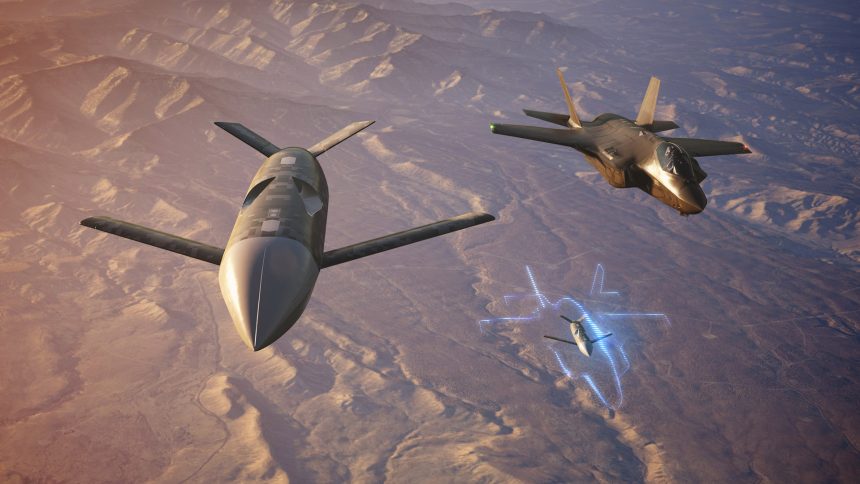Despite missing out on the USAF’s first CCA contract, Lockheed Martin is continuing to invest in the technology, aiming to outfit F-35s with the capability to control multiple CCAs simultaneously
As reported by Air & Space Forces Magazine, Lockheed Martin is investing in Collaborative Combat Aircraft (CCA) technology in anticipation for future U.S. Air Force contracts. While CCA, or more general loyal wingman platforms, compatibility has been a major talking point for sixth generation fighter programs like NGAD and GCAP, Lockheed Martin aims to bring the technology to current fifth generation aircraft as well.
According to Lockheed Martin CEO Jim Taiclet, the company has already developed a pod-based system for the F-35 that would allow the aircraft to coordinate the operations of multiple CCAs simultaneously using a tablet interface. He believes such technology could also be made compatible with the F-22 Raptor, another Lockheed Martin product that has notably been undergoing development to keep it at the top of its field.
Using CCAs as a force multiplier, manned aircraft are able to effectively operate as a much larger force than they already are. The unmanned platforms can be used as simple ‘missile trucks’, allowing for a greater payload to be carried into the battlespace, or more advanced programming could allow for the drones to operate further away from their control aircraft and extend the force’s situational awareness and engagement ranges. Electronic warfare packages could also be carried to allow CCAs to act as decoys without placing additional risk to human pilots.
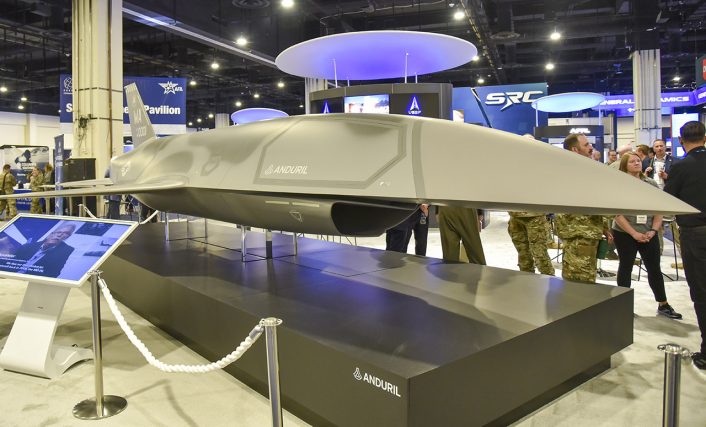
Fielding these capabilities on fifth generation fighters like the F-35 and F-22 could be more important than ever before, with many rumors circling regarding the future of the expensive NGAD program. While the U.S. Air Force remains publicly committed to the concept in the long term, concerns over the platform’s unit cost and rapidly advancing technologies causing reassessments of the force’s needs may well see extensive redesigns and, therefore, lengthy delays. Without the next generation to take over, and relatively low numbers of in service F-22s, this would leave the F-35 as the U.S. Air Force’s primary high end fighter platform for the foreseeable future, working alongside new developments of fourth generation designs like the F-15EX Eagle II.
Lockheed Martin Skunk Works, the company’s advanced research division famous for producing the SR-71 Blackbird and F-117 Nighthawk, previously earmarked $20 million for the development of CCAs and F-35 upgrades under the $100m Project CARRERA. This project also included $38 million for Joint All-Domain Operations (JADO) Battlespace Multipliers, which includes development of low-earth orbit sensor and communications satellites, space based processing, survivable sensor platforms, and Joint All Domain Command and Control (JADC2) data networking nodes. The remaining $42 million covers open architecture platforms for radio and mission systems, artificial intelligence development for UAV control and pilot assistance, advanced 5G and mobile ad-hoc networking, and datalinked multipurpose podded systems.
The apparent requirement for a pod system to allow for CCA control even with the F-35’s innate advanced networking capability suggests that the control architecture required for this type of unmanned vehicle is much more complex than those used for existing UCAVs like the XQ-58 Valkyrie. While details on the exact capabilities are understandably light, at least some level of offboard control of the Valkyrie is possible through the NATO standard Link 16 datalink system.
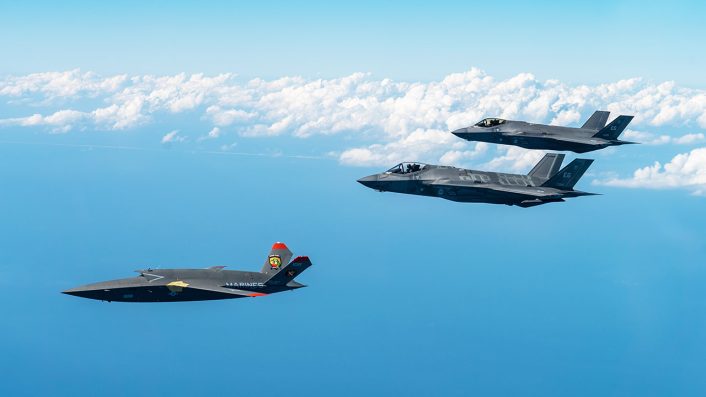
Although initially considered for the Air Force’s CCA program, the XQ-58, developed by Kratos, was deemed to be of an insufficient size for the program’s requirements. The Valkyrie also lost out on the AFRL Off-Board Sensing Station contract, which was awarded to General Atomics’ XQ-67A. The XQ-67A is now forming the basis for General Atomics’ CCA prototype.
While the U.S. Air Force has passed over Kratos’ offering, the U.S. Navy and U.S. Marine Corps remain interested in the type, which promises valuable short take-off capabilities from containerized launchers.
Lockheed Martin assesses its failure to progress to the second stage of Increment 1 of the CCA program as a result of the company over-delivering with a “gold-plated” platform that was not in line with the U.S. Air Force’s anticipated project costs. Speaking to reporters in Sept. 2024, Skunk Works General Manager John Clark said “I think, hindsight 20/20, we could certainly armchair quarterback and say, well the Air Force isn’t valuing survivability right now, so we gold-plated something they didn’t need gold-plated.”
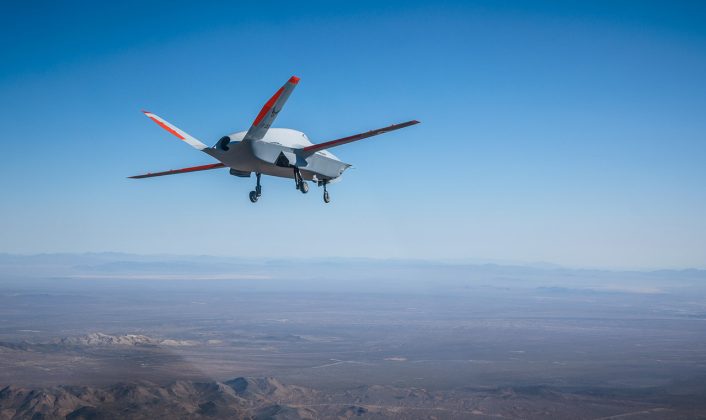
Though all proposals incorporated some level of radar cross-section reduction, Lockheed Martin’s effort placed stealth at a much higher priority. While this increases survivability, it also increases cost, and this is not in line with the current view of CCAs largely as relatively cheap and semi-expendable force multipliers.
In the future, though, a particularly stealthy, high capability CCA design might become necessary should the aircraft operate with the B-21 Raider. As a design that places a heavy emphasis on low observability, the B-21’s stealth could end up being compromised if it were flying alongside lower RCS CCA designs.
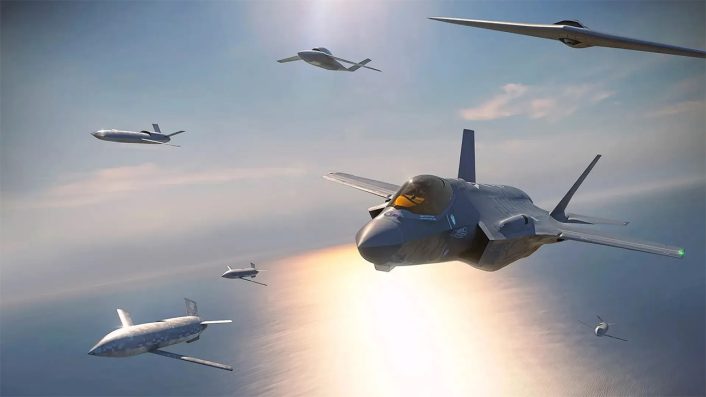
For now, Lockheed Martin will temper their ambitions and work towards a more conventional, affordable design for Increment 2. No timetable is yet available for Increment 2 of the CCA program, beyond that ‘initial activities’ are said to be due to begin by the end of 2024. CCA Increment 1 is projected to move into the production stages from 2026, so if Increment 2 follows a similar timeframe we would likely see its final results toward the end of the decade.
Taiclet is confident of the company’s chances in this stage of the program: “We have to be able to meet the J-20, which is the Chinese fifth-generation combat tactical aircraft, with enough numbers in the Pacific”
“The F-35 and F-22 now are the only really competitive jets against the J-20 one-to one. We have to field enough of those aircraft in a short enough timeframe to maintain an effective deterrent in the Pacific.”
“We have Skunk Works working on both the parent and the child, if you will, when it comes to all CCA concepts, Increment 2 is going to be really where we’re, I think, most competitive, because we can show that we can control these vehicles with today’s technology already at scale”

